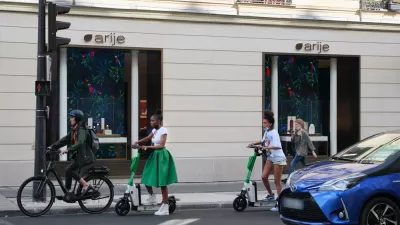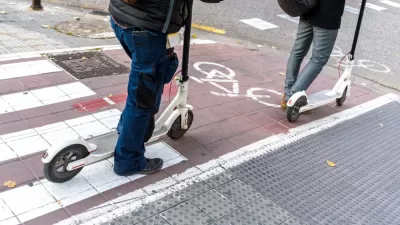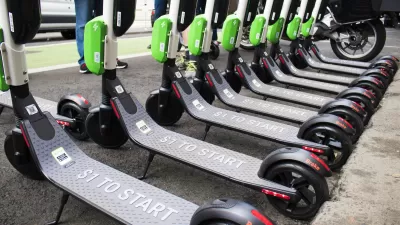Regulations for the operation of electric scooter share in Columbus, Ohio require companies to distribute scooter in low-income neighborhoods. The companies haven't been living up to their part of the deal.

Doug Caruso and Rick Rouan report on a developing controversy in Columbus, where the city is cracking down on electric scooter company Bird, for failing to place 20 percent of its scooters in "opportunity" neighborhoods around the city.
A city administrator sent a violation letter to Bird in April that threatened to impound the company’s scooters if it didn’t start placing 20 percent of its scooters in opportunity neighborhoods as its contract requires. A Dispatch analysis of trip data for March showed that of more than 6,700 Bird trips that month, just 40 started in an opportunity neighborhood.
Bird isn't the only company having a problem meeting the city's requirements.
A look at data that Lime reports to the city shows that the company met the requirement on just 19 days from December through March. Lime’s record improved in late March, when a city official sent an email reminding the company of its responsibilities under the contract.
Lime met the goal between March 23 and March 30, after receiving the letter.
Meanwhile, the city could seize Bird's scooters if the company doesn't clean up its act.
FULL STORY: Scooter companies are slow to move to struggling neighborhoods

Study: Maui’s Plan to Convert Vacation Rentals to Long-Term Housing Could Cause Nearly $1 Billion Economic Loss
The plan would reduce visitor accommodation by 25,% resulting in 1,900 jobs lost.

North Texas Transit Leaders Tout Benefits of TOD for Growing Region
At a summit focused on transit-oriented development, policymakers discussed how North Texas’ expanded light rail system can serve as a tool for economic growth.

Why Should We Subsidize Public Transportation?
Many public transit agencies face financial stress due to rising costs, declining fare revenue, and declining subsidies. Transit advocates must provide a strong business case for increasing public transit funding.

How to Make US Trains Faster
Changes to boarding platforms and a switch to electric trains could improve U.S. passenger rail service without the added cost of high-speed rail.

Columbia’s Revitalized ‘Loop’ Is a Hub for Local Entrepreneurs
A focus on small businesses is helping a commercial corridor in Columbia, Missouri thrive.

Invasive Insect Threatens Minnesota’s Ash Forests
The Emerald Ash Borer is a rapidly spreading invasive pest threatening Minnesota’s ash trees, and homeowners are encouraged to plant diverse replacement species, avoid moving ash firewood, and monitor for signs of infestation.
Urban Design for Planners 1: Software Tools
This six-course series explores essential urban design concepts using open source software and equips planners with the tools they need to participate fully in the urban design process.
Planning for Universal Design
Learn the tools for implementing Universal Design in planning regulations.
Ascent Environmental
Borough of Carlisle
Institute for Housing and Urban Development Studies (IHS)
City of Grandview
Harvard GSD Executive Education
Toledo-Lucas County Plan Commissions
Salt Lake City
NYU Wagner Graduate School of Public Service





























